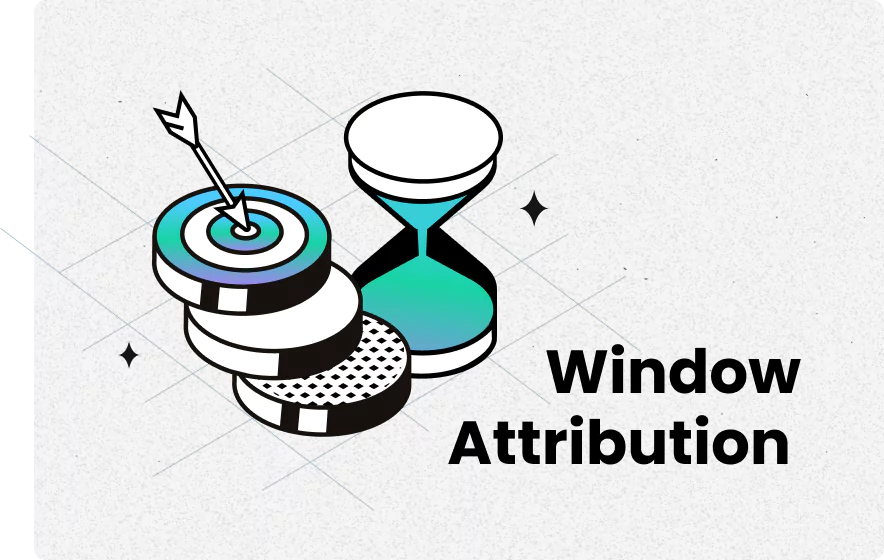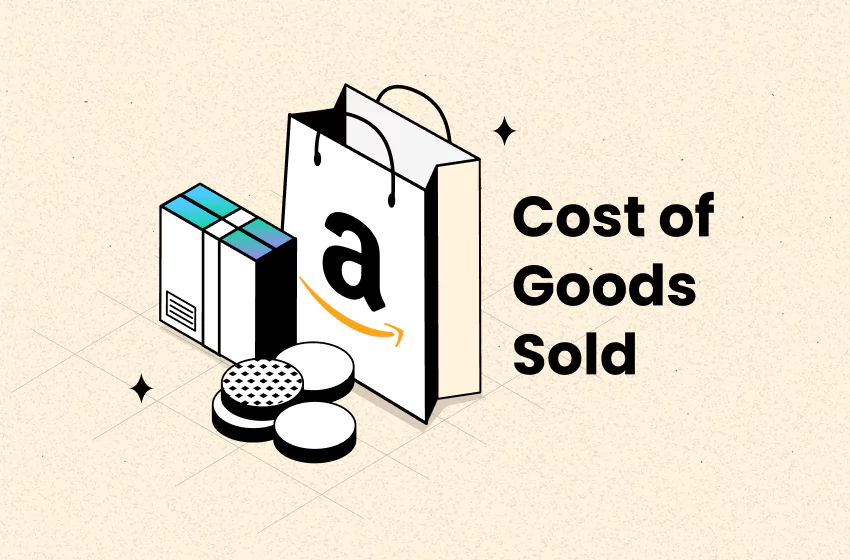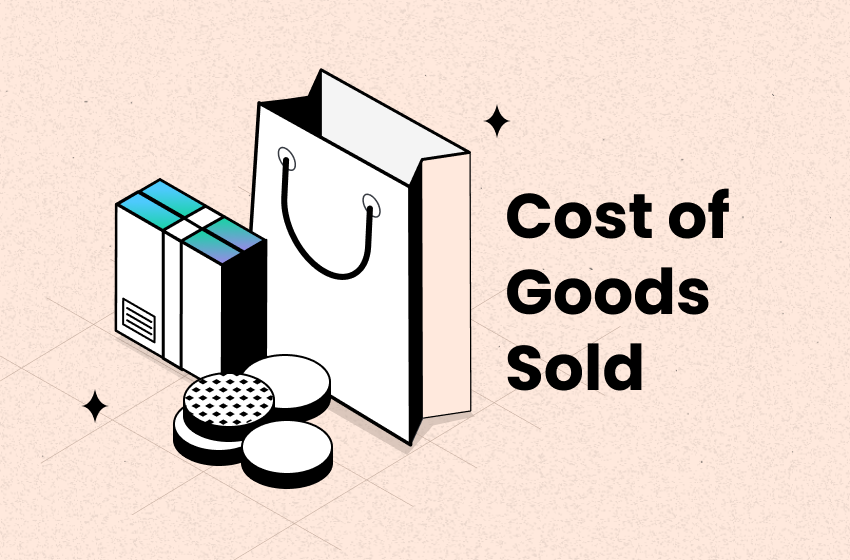Attribution Window 101: Definition & How To Use It?

An attribution window defines the period during which a conversion is credited to a marketing touchpoint. Whether you're running ads, email campaigns, or social media promotions, choosing the right attribution window ensures accurate performance measurement and helps you allocate your marketing budget effectively.
In this guide, we'll break down what an attribution window is, why it matters, the different types available, and how you can use it to improve your Shopify store's marketing performance.
What Is An Attribution Window?
An attribution window is the set period in which a conversion (purchase, signup, or any other desired action) is attributed to a specific marketing interaction. This time frame helps businesses track the effectiveness of their ads and campaigns by determining how long after an ad click or view a conversion can still be credited to that touchpoint.
For example, if a potential customer clicks on a Facebook ad but completes their purchase three days later, the question is: should the ad get credit for the sale? The answer depends on the attribution window set by the business or ad platform.
Why is the Marketing Attribution Window Important?
Selecting the right attribution window is essential for multiple reasons:
- Optimizing Marketing Strategies – Different campaigns perform best with different windows, so choosing the right one can maximize ROI.
- Accurate Performance Measurement – It helps businesses understand which marketing efforts are truly driving conversions.
- Better Budget Allocation – By knowing which channels contribute most to sales, you can allocate your marketing budget more efficiently.
- Avoiding Misattribution – A long attribution window might incorrectly credit an old interaction, while a short window might not give enough credit to early touchpoints.
Types of Attribution Windows
There are various types of attribution windows, each serving different business needs.
1. Click Attribution vs. View-Through Attribution
- Click Attribution – Credits a conversion to a specific touchpoint only if the user clicked on an ad or link.
- View-Through Attribution – Assigns credit even if the user didn’t click but saw the ad and later converted.
2. Common Attribution Window Lengths
Different platforms and businesses use varying attribution period windows. The most common are:
- 1-day window – Best for impulse purchases, flash sales, or low-cost items. If you sell trending products, daily deals, or limited-time offers, this window ensures your ads get credited for quick conversions.
- 7-day window – Commonly used in eCommerce, providing a balance between short-term and delayed conversions. This is particularly useful for Shopify merchants selling mid-priced items that require a little more consideration before purchase.
- 28-day window – Ideal for high-ticket items and products with longer consideration cycles. If your Shopify store sells expensive products such as luxury goods, furniture, or electronics, a longer window will help track delayed conversions.
- Custom windows – Some businesses set custom time frames based on their data and customer journey. Shopify merchants can use historical purchase data and customer analytics to define a more precise attribution window tailored to their unique sales cycle.
Using the right attribution window can provide Shopify merchants with deeper insights into how customers interact with their store before converting. If most purchases happen within a specific timeframe after an ad click, adjusting the attribution window accordingly ensures accurate measurement and better budget allocation.
What Is a Good Attribution Window?
There is no one-size-fits-all attribution window. The ideal window depends on several factors:
- Industry and Product Type – High-value products often require longer consideration, needing a longer attribution window.
- Customer Decision-Making Process – If your customers take days or weeks to decide, a longer window ensures proper attribution.
- Advertising Platform – Facebook, Google Ads, and other platforms have default attribution settings, but adjusting them can impact how conversions are reported.
How to Use Attribution Windows in Marketing Campaigns?
Effectively using attribution windows allows you to track conversions more accurately and optimize your marketing spend. Follow these steps to integrate attribution windows into your campaigns.
1. Define Clear Marketing Objectives
Before choosing an attribution window, establish what you’re measuring. Are you tracking app installs, website conversions, or product purchases? The window you select should align with these goals.
For instance, if you're focused on app installs, a shorter attribution window makes sense, as users typically decide quickly. In contrast, for high-value products with longer consideration periods, a longer window ensures you capture delayed conversions.
2. Choose the Right Attribution Model
Attribution models determine how credit is assigned to different touchpoints in a customer’s journey.
A first-click model is useful for understanding how new customers discover your brand, while a last-click model is ideal for tracking final purchase decisions.
Linear attribution evenly distributes credit across all touchpoints, while time decay prioritizes recent interactions. The right model depends on your objectives, and sometimes using a combination of models provides deeper insights.
3. Implement Tracking Tools
To accurately attribute conversions within your chosen window, you need the right tracking tools. Platforms like Google Analytics and Shopify’s Marketing Insights help monitor conversion paths, while Meta Pixel provides visibility into ad-driven interactions on Facebook and Instagram.
For a more advanced, data-driven approach, tools like TrueProfit offer real-time profit tracking with built-in attribution analysis, helping Shopify merchants understand which marketing efforts are truly profitable.
4. Analyze and Optimize Marketing Strategies
Once you have attribution data, analyze it regularly to identify trends. Look for patterns that reveal which touchpoints contribute most to conversions and adjust your marketing efforts accordingly.
If certain channels underperform, test new creatives, audience segments, or budget allocations. Optimization tools like Google Optimize and Meta Ads Manager can help refine your ads and landing pages based on attribution insights.
5. Account for Multi-Channel Interactions
Customers rarely follow a linear path to purchase. A person might see an Instagram ad, click on a Google search result later, and finally convert after receiving an email. Ensuring your attribution window accounts for these multi-channel interactions helps you understand the complete customer journey.
If your model only tracks last-click conversions, you might miss the role of earlier touchpoints that influenced the sale.
6. Use Time Decay for Better Accuracy
For businesses with longer sales cycles, time decay attribution helps by giving more weight to recent interactions while still recognizing earlier touchpoints. This model reflects the reality that as customers get closer to a purchase, recent interactions often play a more significant role in decision-making.
7. Balance Short-Term and Long-Term Goals
Marketing campaigns serve different purposes—some aim for immediate sales, while others focus on brand awareness and long-term customer retention.
A short attribution window with a last-click model works well for tracking direct sales, while a longer window with a first-click model can provide insights into brand discovery. Shopify merchants should balance both approaches to maximize their marketing impact.
8. Test and Refine Through A/B Testing
Since there is no one-size-fits-all approach to attribution, A/B testing different attribution windows can help identify the best fit for your business.
Compare a 7-day window against a 28-day window or test different models to see which provides the most accurate reflection of customer behavior. Refining your strategy over time ensures your marketing decisions are based on real data rather than assumptions.
9. Educate Your Team & Stakeholders
Attribution data only becomes valuable when it is understood and applied correctly. Ensure that everyone in the team understands how attribution windows influence business decisions.
Regularly share insights on why certain campaigns receive more credit than others and how attribution modeling impacts budget allocation. When everyone is aligned, your marketing team can make more data-driven decisions.
Tips to Use Attribution Windows for Shopify Store
To make the most of attribution windows, Shopify merchants should implement strategies that align with their business goals. Here’s how you can optimize attribution tracking for better decision-making and improved marketing performance.
1. Enable Enhanced E-commerce Tracking
Start by activating Enhanced E-commerce Tracking in Shopify. This feature provides deeper insights into customer interactions, such as product impressions, clicks, add-to-cart actions, and completed purchases. These data points are essential for accurately attributing conversions to the right marketing touchpoints.
2. Integrate Google Analytics for Attribution Analysis
Connecting Google Analytics to your Shopify store unlocks powerful attribution models and customizable window settings. By setting up Google Analytics attribution tracking, you can monitor how different marketing channels contribute to conversions and fine-tune your campaigns accordingly.
3. Customize Attribution Windows in Google Analytics
Google Analytics allows you to define custom attribution windows that reflect your customer journey. Navigate to the "Attribution Model" section in your Property settings to create models that assign credit to each touchpoint based on the length of your sales cycle.
4. Use UTM Parameters for Campaign Tracking
To accurately measure the impact of your marketing campaigns, use UTM parameters when sharing links across different channels. Shopify automatically records UTM data, allowing you to track traffic sources, campaign effectiveness, and conversion paths in Google Analytics.
5. Analyze Multi-Channel Attribution Reports
Take advantage of Google Analytics' multi-channel attribution reports, such as "Assisted Conversions" and "Top Conversion Paths." These reports reveal how various touchpoints contribute to conversions, helping you optimize underperforming channels and refine your marketing mix.
6. Leverage Shopify Apps for Advanced Attribution Tracking
For deeper insights, consider using Shopify apps that specialize in attribution tracking, such as TrueProfit, Attribuly, and Wicked Reports. These tools provide real-time profit analytics, multi-touch attribution modeling, and more detailed performance tracking across different channels.
7. Monitor Customer Behavior & Conversion Funnels
Use Shopify's built-in analytics to study customer behavior before they convert. Tracking which marketing channels and touchpoints drive the most engagement can help you optimize your conversion funnels and marketing strategies.
8. Stay Updated with Attribution & Analytics Features
Both Shopify and Google Analytics frequently update their attribution capabilities. Stay informed about new features and improvements to ensure you're leveraging the latest tools for more accurate marketing analysis.
By implementing these strategies, you can make data-driven marketing decisions that improve attribution accuracy, enhance campaign performance, and ultimately drive more sales for your Shopify store.
Remember, attribution models show which channels drive conversions, but they don’t tell you if those channels are actually profitable. Before doubling down on a strategy, plug your revenue and costs into this Profit Margin Calculator to get the full picture.
Attribution window helps enhance the conversion rates of ad campaigns. These features enable you to understand customers better, then leverage such insights to create more effective ads.
Decoding customer behaviors is complex, yet an attribution window takes the heavy lifting. Its insights and analysis pave the way for your ad campaigns to generate more leads and convert customers.
However helpful the tool can be, you should still combine it with other KPIs to increase the accuracy of analysis and better insights for ad campaign management. The key is to identify your marketing and business goals, then find the most matching feature that helps you achieve them.
Hopefully, this article has provided an insightful walkthrough of its helpful functions and the optimal application for steller marketing performance!
Leah Tran is a Content Specialist at TrueProfit, where she crafts SEO-driven and data-backed content to help eCommerce merchants understand their true profitability. With a strong background in content writing, research, and editorial content, she focuses on making complex financial and business concepts clear, engaging, and actionable for Shopify merchants.





![Amazon FBA Success Rate: All The Crucial Stats [2025]](https://be.trueprofit.io/uploads/AMZ.webp)







 Shopify profits
Shopify profits